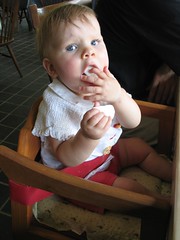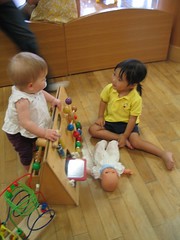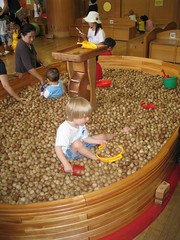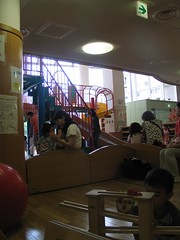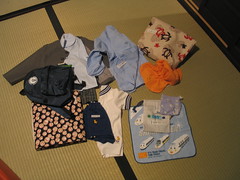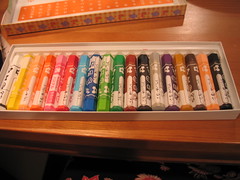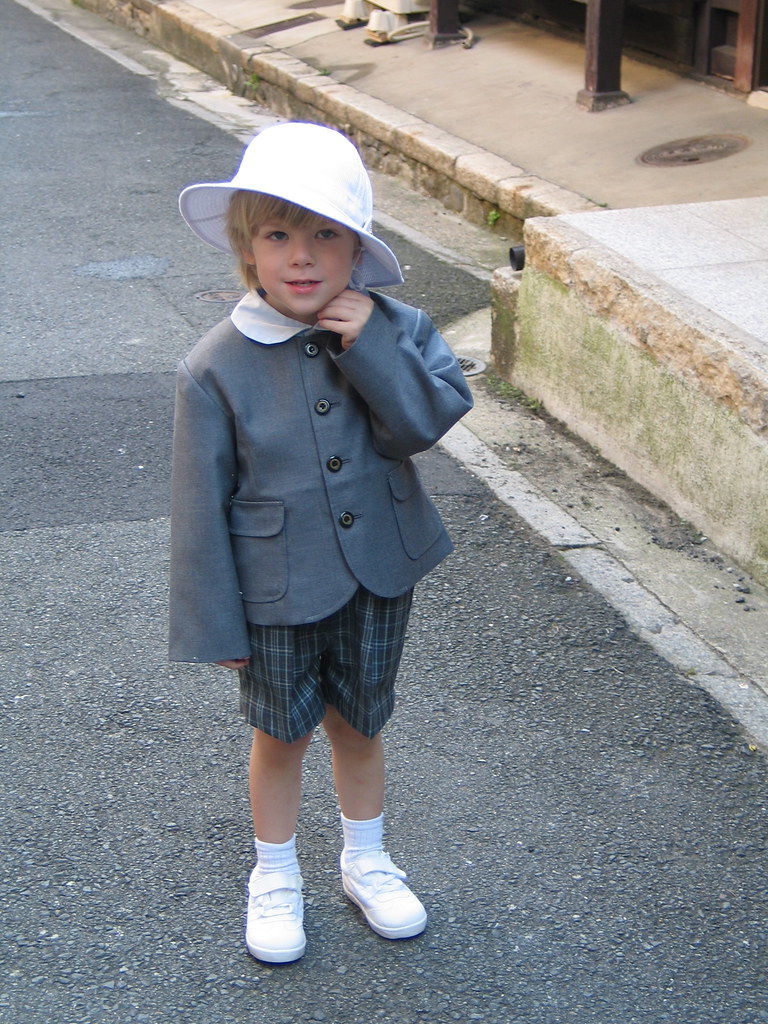We have been able to make some arrangements to help out with Maia's care, and I learned some more about Japanese daycare in the process. Through web searches, and even a PDF document on the Kyoto municipal website, I found a number of small daycare centers that are outside the system run by the Welfare Office. These might be considered unlicensed , or as an article about them calls them "unapproved"(muninka/ninkagai). Some places are in this category because they don't pass certain standards, but most because they want to operate outside the public system and provide services that the "approved" centers do not. Daycare operated by a company would also fall in this category, as they determine their own admissions and do not accept kids via the welfare office application system. Some parents don't qualify for the public daycare system if they are not both working or studying full time, and they may use this as an alternative. There is not a strong tradition of babysitting here either, so you can not usually hire a local high school student cheaply - this provides an alternative to that. The city posts the PDF of ninkagai centers, but did not mention them to me, even when I asked if there might be any alternatives for me while I waited to get into a registered hoikuen.
I visited a couple places on the list of centers that had registered with the city, and chose one with the nicely redundant name of Chiisai peti (Little Petit) near here. They have a lot of flexible plans, and I chose to buy a block of 50 hours for about 45,000 yen. Those can be used over the next three months. That's around 8/hour, so pretty reasonable by Boston standards, and the ratio is three children to one adult. The regular kids there are all close to her age, a lot from 12-15 months, so a nice fit. Though there was also one lonely looking boy about eight years old who must be going there after school.
In exploring this category of care centers, I avoided those marked as "baby hotels" (beebi hoteru). These are places that take babies overnight and have a lot of irregular users. They received a lot of bad press on low-end news and expose programs in the 90s. There were some injuries to children but the focus was on criticizing mothers who used them. I expect most of these have some useful role to play, but I am just a little too put off by the expression.
For October and November she can go to the Center for Women Researchers at Kyoto University which has a system to help women faculty and students who are waiting for spots for their children in the hoikuen system. It's only for two months, but I will use it. The location is halfway between my office and classroom, which is only a seven minutes walk total. I can pick her up three minutes after my LONG afternoon of classes ends on Monday at 6PM. And it's only 50,000/month (about $450) for full-time quality care, provided by one of the companies I researched for temporary care this month. That company runs the daycare center at the Hotel Okura and other such posh locations where there are many temporary and non-Japanese visitors (this is different from "baby hotels"! But since they provide quite late night babysitting at the hotels, they are rather like baby hotels for the rich).
You might ask why this is only for women faculty and students and not all parents. The Center's pamphlet provides some impressive and disheartening statistics about the percentage of faculty who are women at Kyoto University, which is one of the top few universities in the country. Women comprise only 4.2% of full professors, 10.7% of associate professors, and 8.7% of assistant professors. That means the percentage of women full professors at Kyoto University as a whole is half that of tenured women in the natural sciences at Harvard, ie not very high. This center is supposed to help improve that through daycare and elder care support, back-up care when a child is sick and can't be cared for in daycare, as well as research and analyze the obstacles for women scholars. I am not sure what services they provide, but I think the inclusion of elder-care is novel and important as that is a huge burden everywhere, and which women especially are expected by many to bear. This center seems like a pleasant and much-needed facility, so I hope Maia's short stay there will not be too much of a burden since I am only tangentially affiliated with the school. But since Gender Equality and International Relations are both listed among the top six priorities for the university I think I fit.
8 years ago
